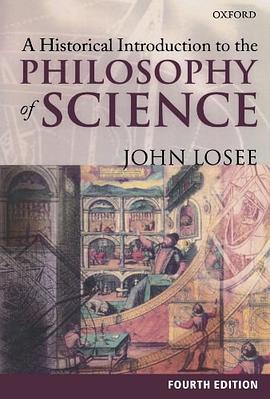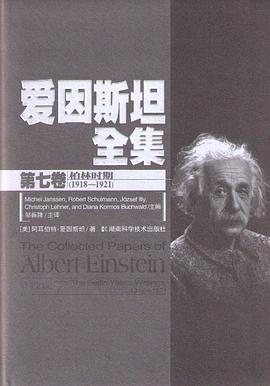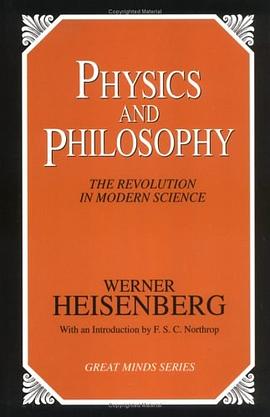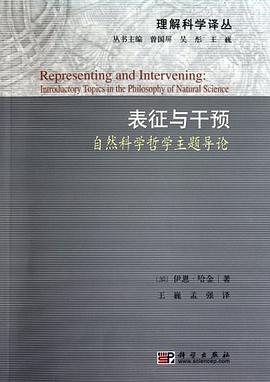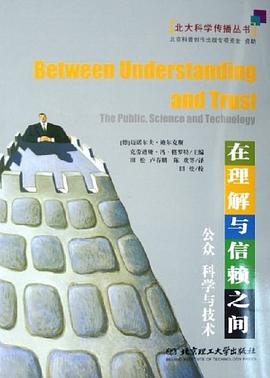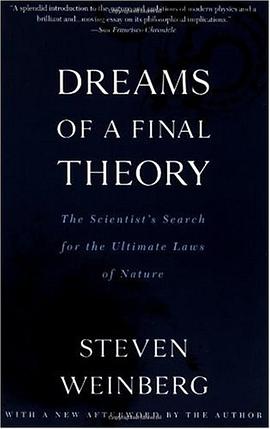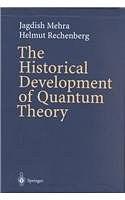

具體描述
《超弦和M理論導論(第2版)》內容簡介:超弦和M理論是現代物理學中最有趣最活躍的研究課題之一。該問題比較睏難同時也充滿爭議,一些人稱之為“終極理論”,這是因為超弦理論有可能解決睏擾人們多年的難題,即統一二十世紀最偉大的兩個理論:廣義相對論和量子場論。《超弦和M理論導論(第2版)》全麵細緻地講解超弦理論和該領域的最新研究進展,內容包括四維超弦,Kac-Moody代數,Teichmuller空間和Calabi-Yau流形,M理論和D膜,對偶和BPS關係,矩陣模型等,可以作為研究生教材,同時對研究人員也有參考價值。作者首先簡要介紹瞭點粒子理論,然後利用費曼路徑積分詳細討論超弦理論。超弦研究需要很多數學工具,書中分彆作瞭介紹,如指標定理,同調論和Kahler流形等。在第二版中,作者對內容做瞭整體修訂,並添加瞭M理論的三個新章節。閱讀《超弦和M理論導論(第2版)》需要量子力學和相對論的基本知識。
讀者對象:理論物理、高能物理、場論和弦論等專業的高年級本科生、研究生和相關專業的科研人員。
著者簡介
圖書目錄
Preface
Acknowledgments
Ⅰ First Quantization and Path Integrals
1 Path Integrals and Point Particles
1.1 Why Strings?
1.2 Historical Review of Gauge Theory
1.3 Path Integrals and Point Particles
1.4 Relativistic Point Particles
1.5 First and Second Quantization
1.6 Faddeev-Popov Quantization
1.7 Second Quantization
1.8 Harmonic Oscillators
1.9 Currents and Second Quantization
1.10 Summary
References
2 Nambu-Goto Strings
2.1 Bosonic Strings
2.2 Gupta-Bleuler Quantization
2.3 Light Cone Quantization
2.4 BRST Quantization
2.5 Trees
2.6 From Path Integrals to Operators
2.7 Projective Invariance and Twists
2.8 Closed Strings
2.9 Ghost Elimination
2.100 Summary
References
3 Superstrings
3.1 Supersymmetric Point Particles
3.2 Two-Dimensional Supersymmetry
3.3 Trees
3.4 Local Two-Dimensional Supersymmetry
3.5 Quantization
3.6 GSO Projection
3.7 Superstrings
3.8 Light Cone Quantization of the GS Action
3.9 Vertices and Trees
3.10 Summary
References
4 Conformal Field Theory and Kac——Moody Algebras
4.1 Conformal Field Theory
4.2 Superconformal Field Theory
4.3 Spin Fields
4.4 Superconformal Ghosts
4.5 Fermion Vertex
4.6 Spinors and Trees
4.7 Kac-Moody Algebras
4.8 Supersymmetry
4.9 Summary
References
5 Mulfiloops and Teichmuller Spaces
5.1 Unitarity
5.2 Single-Loop Amplitude
5.3 Harmonic Oscillators
5.4 Single-Loop Superstring Amplitudes
5.5 Closed Loops
5.6 Multiloop Amplitudes
5.7 Riemann Surfaces and Teichmiiller Spaces
5.8 Conformal Anomaly
5.9 Superstrings
5.10 Determinants and Singularities
5.11 Moduli Space and Grassmannians
5.12 Summary
References
Ⅱ Second Quantization and the Search for Geometry
6 Light Cone Field Theory
6.1 Why String Field Theory?
6.2 Deriving Point Particle Field Theory
6.3 Light Cone Field Theory
6.4 Interactions
6.5 Neumann Function Method
6.6 Equivalence of the Scattering Amplitudes
6.7 Four-String Interaction
6.8 Superstring Field Theory
6.9 Summary
References
7 BRST Field Theory
7.1 Covariant String Field Theory
7.2 BRST Field Theory
7.3 Gauge Fixing
7.4 Interactions
7.5 Witten's String Field Theory
7.6 Proof of Equivalence
7.7 Closed Strings and Superstrings
7.8 Summary
References
Ⅲ Phenomenology and Model Building
8 Anomalies and the Atiyah-Singer Theorem
8.1 Beyond GUT Phenomenology
8.2 Anomalies and Feynman Diagrams
8.3 Anomalies in the Functional Formalism
8.4 Anomalies and Characteristic Classes
8.5 Dirac Index
8.6 Gravitational and Gauge Anomalies
8.7 Anomaly Cancellation in Strings
8.8 Summary
References
9 Heterotic Strings and Compactification
9.1 Compactification
9.2 The Heterotic String
9.3 Spectrum
9.4 Covariant and Fermionic Formulations
9.5 Trees
9.6 Single-Loop Amplitude
9.7 Es and Kac——Moody Algebras
9.8 Lorentzian Lattices
9.9 Summary
References
10 Calabi——Yau Spaces and Orbifolds
10.1 Calabi-Yau Spaces
10.2 Review of de Rahm Cohomology
10.3 Cohomology and Homology
10.4 K/ihler Manifolds
10.5 Embedding the Spin Connection
10.6 Fermion Generations
10.7 Wilson Lines
10.8 Orbifoids
10.9 Four-Dimensional Superstrings
10.10 Summary
References
Ⅳ M-Theory
11 M-Theory and Duality
11.1 Introduction
11.2 Duality in Physics
11.3 Why Five String Theories?
11.4 T-Duality
11.5 S-Duality
11.5.1 Type IIA Theory
11.5.2 Type IIB Theory
11.5.3 M-Theory and Type IIB Theory
11.5.4 E8 E8 Heterotic String
11.5.5 Type I Strings
11.6 Summary
References
12 Compactifications and BPS States
12.1 BPS States
12.2 Supersymmetry and P-Branes
12.3 Compactification
12.4 Example: D = 6
12.4.1 D = 6, N = (2, 2) Theory
12.4.2 D = 6, N = (1, 1) Theories
12.4.3 M-Theory in D = 7
12.5 Example:D=4, N=2 and D=6, N=1
12.6 Symmetry Enhancement and Tensionless Strings
12.7 F-Theory
12.8 Example: D = 4
12.9 Summary
References
13 Solitons, D-Branes, and Black Holes
13.1 Solitons
13.2 Supermembrane Actions
13.3 Five-Brahe Action
13.4 D-Branes
13.5 D-Brane Actions
13.6 M(atrix) Models and Membranes
13.7 Black Holes
13.8 Summary
13.9 Conclusion
References
Appendix
A.1 A Brief Introduction to Group Theory
A.2 A Brief Introduction to General Relativity
A.3 A Brief Introduction to the Theory of Forms
A.4 A Brief Introduction to Supersymmetry
A.5 A Brief Introduction to Supergravity
A.6 Notation
References
Index
· · · · · · (收起)
Acknowledgments
Ⅰ First Quantization and Path Integrals
1 Path Integrals and Point Particles
1.1 Why Strings?
1.2 Historical Review of Gauge Theory
1.3 Path Integrals and Point Particles
1.4 Relativistic Point Particles
1.5 First and Second Quantization
1.6 Faddeev-Popov Quantization
1.7 Second Quantization
1.8 Harmonic Oscillators
1.9 Currents and Second Quantization
1.10 Summary
References
2 Nambu-Goto Strings
2.1 Bosonic Strings
2.2 Gupta-Bleuler Quantization
2.3 Light Cone Quantization
2.4 BRST Quantization
2.5 Trees
2.6 From Path Integrals to Operators
2.7 Projective Invariance and Twists
2.8 Closed Strings
2.9 Ghost Elimination
2.100 Summary
References
3 Superstrings
3.1 Supersymmetric Point Particles
3.2 Two-Dimensional Supersymmetry
3.3 Trees
3.4 Local Two-Dimensional Supersymmetry
3.5 Quantization
3.6 GSO Projection
3.7 Superstrings
3.8 Light Cone Quantization of the GS Action
3.9 Vertices and Trees
3.10 Summary
References
4 Conformal Field Theory and Kac——Moody Algebras
4.1 Conformal Field Theory
4.2 Superconformal Field Theory
4.3 Spin Fields
4.4 Superconformal Ghosts
4.5 Fermion Vertex
4.6 Spinors and Trees
4.7 Kac-Moody Algebras
4.8 Supersymmetry
4.9 Summary
References
5 Mulfiloops and Teichmuller Spaces
5.1 Unitarity
5.2 Single-Loop Amplitude
5.3 Harmonic Oscillators
5.4 Single-Loop Superstring Amplitudes
5.5 Closed Loops
5.6 Multiloop Amplitudes
5.7 Riemann Surfaces and Teichmiiller Spaces
5.8 Conformal Anomaly
5.9 Superstrings
5.10 Determinants and Singularities
5.11 Moduli Space and Grassmannians
5.12 Summary
References
Ⅱ Second Quantization and the Search for Geometry
6 Light Cone Field Theory
6.1 Why String Field Theory?
6.2 Deriving Point Particle Field Theory
6.3 Light Cone Field Theory
6.4 Interactions
6.5 Neumann Function Method
6.6 Equivalence of the Scattering Amplitudes
6.7 Four-String Interaction
6.8 Superstring Field Theory
6.9 Summary
References
7 BRST Field Theory
7.1 Covariant String Field Theory
7.2 BRST Field Theory
7.3 Gauge Fixing
7.4 Interactions
7.5 Witten's String Field Theory
7.6 Proof of Equivalence
7.7 Closed Strings and Superstrings
7.8 Summary
References
Ⅲ Phenomenology and Model Building
8 Anomalies and the Atiyah-Singer Theorem
8.1 Beyond GUT Phenomenology
8.2 Anomalies and Feynman Diagrams
8.3 Anomalies in the Functional Formalism
8.4 Anomalies and Characteristic Classes
8.5 Dirac Index
8.6 Gravitational and Gauge Anomalies
8.7 Anomaly Cancellation in Strings
8.8 Summary
References
9 Heterotic Strings and Compactification
9.1 Compactification
9.2 The Heterotic String
9.3 Spectrum
9.4 Covariant and Fermionic Formulations
9.5 Trees
9.6 Single-Loop Amplitude
9.7 Es and Kac——Moody Algebras
9.8 Lorentzian Lattices
9.9 Summary
References
10 Calabi——Yau Spaces and Orbifolds
10.1 Calabi-Yau Spaces
10.2 Review of de Rahm Cohomology
10.3 Cohomology and Homology
10.4 K/ihler Manifolds
10.5 Embedding the Spin Connection
10.6 Fermion Generations
10.7 Wilson Lines
10.8 Orbifoids
10.9 Four-Dimensional Superstrings
10.10 Summary
References
Ⅳ M-Theory
11 M-Theory and Duality
11.1 Introduction
11.2 Duality in Physics
11.3 Why Five String Theories?
11.4 T-Duality
11.5 S-Duality
11.5.1 Type IIA Theory
11.5.2 Type IIB Theory
11.5.3 M-Theory and Type IIB Theory
11.5.4 E8 E8 Heterotic String
11.5.5 Type I Strings
11.6 Summary
References
12 Compactifications and BPS States
12.1 BPS States
12.2 Supersymmetry and P-Branes
12.3 Compactification
12.4 Example: D = 6
12.4.1 D = 6, N = (2, 2) Theory
12.4.2 D = 6, N = (1, 1) Theories
12.4.3 M-Theory in D = 7
12.5 Example:D=4, N=2 and D=6, N=1
12.6 Symmetry Enhancement and Tensionless Strings
12.7 F-Theory
12.8 Example: D = 4
12.9 Summary
References
13 Solitons, D-Branes, and Black Holes
13.1 Solitons
13.2 Supermembrane Actions
13.3 Five-Brahe Action
13.4 D-Branes
13.5 D-Brane Actions
13.6 M(atrix) Models and Membranes
13.7 Black Holes
13.8 Summary
13.9 Conclusion
References
Appendix
A.1 A Brief Introduction to Group Theory
A.2 A Brief Introduction to General Relativity
A.3 A Brief Introduction to the Theory of Forms
A.4 A Brief Introduction to Supersymmetry
A.5 A Brief Introduction to Supergravity
A.6 Notation
References
Index
· · · · · · (收起)
讀後感
評分
評分
評分
評分
評分
用戶評價
评分
非常清晰的講解,關鍵點和區分性介紹的明晰性
评分非常清晰的講解,關鍵點和區分性介紹的明晰性
评分高端理論指引未來
评分高端理論指引未來
评分保持
相關圖書
本站所有內容均為互聯網搜索引擎提供的公開搜索信息,本站不存儲任何數據與內容,任何內容與數據均與本站無關,如有需要請聯繫相關搜索引擎包括但不限於百度,google,bing,sogou 等
© 2025 book.quotespace.org All Rights Reserved. 小美書屋 版权所有

